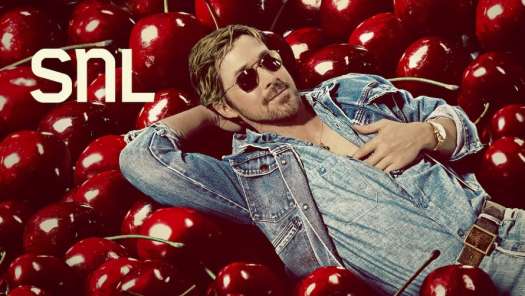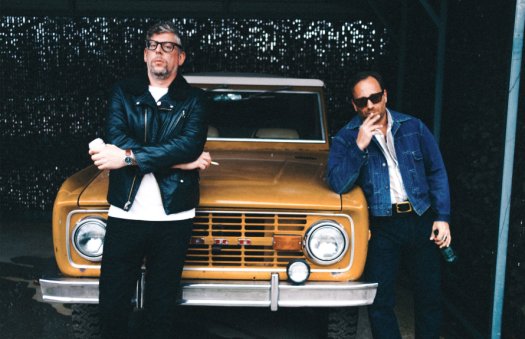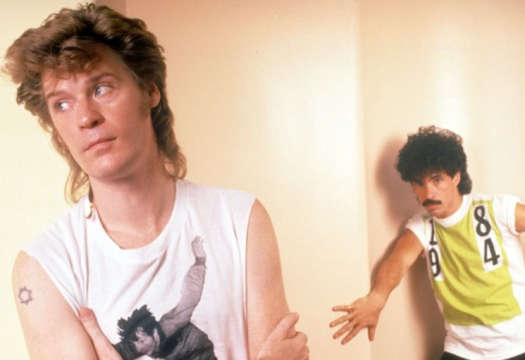On paper, Walton Goggins plays the villain in Tomb Raider, the rebooted big screen adaptation of the rebooted videogame franchise opposite Alicia Vikander, who steps into Angelina Jolie's boots as death-defying heroine Lara Croft. But Goggins doesn't see it that way.
"I relished the role of playing a complicated guy," Goggins tells Exclaim! "He's the villain, he's the antagonist in the story, he's the obstacle — one of the biggest obstacles that she has to overcome in order to become the person that she's destined to be. But I didn't look at it that way. I looked at it as a three-dimensional person in the world."
Goggins' character, Mathias Vogel, is a father of two who is separated from his family in pursuit of unearthing a mystical tomb on the fictional Japanese island of Yamatai. Throughout the film, he proves himself willing to torture, sabotage and even kill anyone who stands in his way.
Encountering Croft, who has voyaged to the island in pursuit of her missing father, Vogel believes he has found the ticket to the family reunion he so desperately covets. "Over the course of his tenure on this island, he gave up hope. When he meets Lara Croft for the first time, he gets a little of that hope back. For a person like that, who's so desperate to see their family, they'll do anything and sacrifice anyone to attain that goal," says Goggins.
But just because Goggins doesn't see his character as a villain doesn't mean he believes Vogel is a hero. "I don't think he sees himself as a hero. I don't think that anybody in life does," he muses. "I don't think that people step outside their own narrative that often, they're just caught up in the moment of their day. Vogel is no different, and I think Alicia would say the same thing about Lara Croft. I don't think she sees herself as a heroine, she sees herself as a person making her way in the world, certainly in this story."
It's this moral ambiguity that aims to make Tomb Raider compelling, putting Croft and Vogel in an uneasy truce as they aim to reunite with their respective families. Goggins attributes the way the film explores their complex relationship to the current "golden age of television," where shows such as Breaking Bad and Mad Men allow audiences to explore the many facets of human motivation, eschewing the two-dimensional hero-villain dichotomy in favour of nuanced, flawed characters. "This new golden age of television, 15 years into this golden era, has allowed the audience the opportunities to support people that are on that journey. The 'anti-hero' is not gone yet."
Goggins builds a persuasive case toward his character's motivations and moral standing, bolstered by the fact that his character's relentless pursuit of his goals mirrors that of his own — though with less murder.
With his involvement in Tomb Raider, Goggins was fulfilling a childhood fantasy spurred by a love of treasure hunting films, namely John Huston's 1948 film The Treasure of the Sierra Madre. "I think every kid's dream is to discover something, to go on some grand adventure, and every single day that's what it was like on set."
He continues, "There was a shot in particular when Mathias Vogel comes out of the woods and holds up [Croft's] notebook and realizes that he is on the precipice of discovering the thing that has consumed so much of his life, and the way that [director] Roar [Uthaug] photographed that, with [cinematographer] George Richmond, I always wanted to be in that shot, as an actor," says Goggins. "I started jumping up and down screaming, running around saying, 'Thank you! Oh my god, what a dream come true!' And it is!"
"I relished the role of playing a complicated guy," Goggins tells Exclaim! "He's the villain, he's the antagonist in the story, he's the obstacle — one of the biggest obstacles that she has to overcome in order to become the person that she's destined to be. But I didn't look at it that way. I looked at it as a three-dimensional person in the world."
Goggins' character, Mathias Vogel, is a father of two who is separated from his family in pursuit of unearthing a mystical tomb on the fictional Japanese island of Yamatai. Throughout the film, he proves himself willing to torture, sabotage and even kill anyone who stands in his way.
Encountering Croft, who has voyaged to the island in pursuit of her missing father, Vogel believes he has found the ticket to the family reunion he so desperately covets. "Over the course of his tenure on this island, he gave up hope. When he meets Lara Croft for the first time, he gets a little of that hope back. For a person like that, who's so desperate to see their family, they'll do anything and sacrifice anyone to attain that goal," says Goggins.
But just because Goggins doesn't see his character as a villain doesn't mean he believes Vogel is a hero. "I don't think he sees himself as a hero. I don't think that anybody in life does," he muses. "I don't think that people step outside their own narrative that often, they're just caught up in the moment of their day. Vogel is no different, and I think Alicia would say the same thing about Lara Croft. I don't think she sees herself as a heroine, she sees herself as a person making her way in the world, certainly in this story."
It's this moral ambiguity that aims to make Tomb Raider compelling, putting Croft and Vogel in an uneasy truce as they aim to reunite with their respective families. Goggins attributes the way the film explores their complex relationship to the current "golden age of television," where shows such as Breaking Bad and Mad Men allow audiences to explore the many facets of human motivation, eschewing the two-dimensional hero-villain dichotomy in favour of nuanced, flawed characters. "This new golden age of television, 15 years into this golden era, has allowed the audience the opportunities to support people that are on that journey. The 'anti-hero' is not gone yet."
Goggins builds a persuasive case toward his character's motivations and moral standing, bolstered by the fact that his character's relentless pursuit of his goals mirrors that of his own — though with less murder.
With his involvement in Tomb Raider, Goggins was fulfilling a childhood fantasy spurred by a love of treasure hunting films, namely John Huston's 1948 film The Treasure of the Sierra Madre. "I think every kid's dream is to discover something, to go on some grand adventure, and every single day that's what it was like on set."
He continues, "There was a shot in particular when Mathias Vogel comes out of the woods and holds up [Croft's] notebook and realizes that he is on the precipice of discovering the thing that has consumed so much of his life, and the way that [director] Roar [Uthaug] photographed that, with [cinematographer] George Richmond, I always wanted to be in that shot, as an actor," says Goggins. "I started jumping up and down screaming, running around saying, 'Thank you! Oh my god, what a dream come true!' And it is!"




